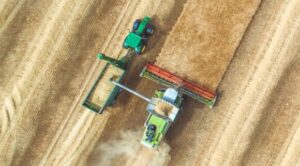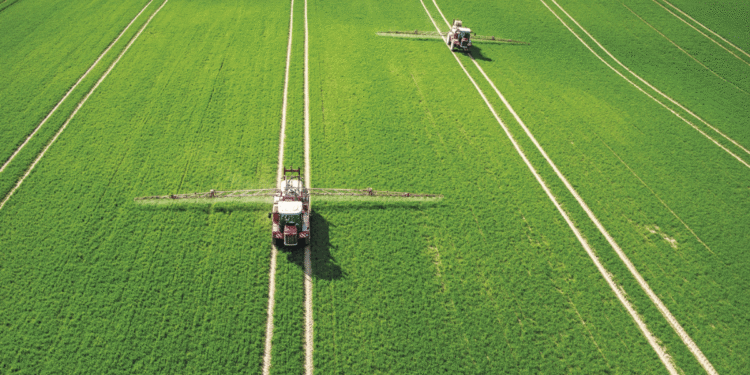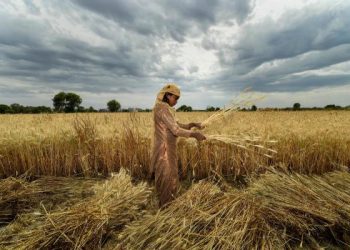If you’re an avid reader of this blog, you know that we’re big fans of innovative agricultural advancements. There are so many ways to help feed the world while conserving resources and protecting the environment. Innovative farmers use new technologies and creative thinking to develop better ways to grow crops, raise livestock and manage smaller farms. Agriculture has always been a ripe breeding ground for new ideas.
Farmers have always had to find solutions to their problems — from making sure farm equipment is in good working order to overcoming variable weather conditions. Innovative farmers see those problems as opportunities for change, instead of roadblocks that need to be overcome.
Smart Irrigation Systems
If you’ve ever looked into the future and seen the world getting thirstier and thirstier, you’ll be excited to learn about smart irrigation systems. Modern irrigation systems help farmers control the flow of water to their crops in real time. This allows them to apply the exact amount of water they need to maximize crop yield while minimizing wasted water and controlling runoff into nearby waterways.
Irrigation systems can be connected wirelessly to sensors that can track weather conditions, soil moisture levels, plant growth, and other factors. In addition to improving yields, this technology can help prevent groundwater contamination, reduce water wastage and reduce greenhouse gas emissions. The next time you’re watering your plants, you might want to take a moment to appreciate how far irrigation systems have come.
Robot Vehicles For Tractors And Other Farm Machines
It’s hard to imagine now, but when robotics began to be integrated into farming in the early 2000s, it was a big deal. Since then, the use of remote-controlled machines has become commonplace. Robots can be used to control many farm activities, from planting and harvesting to cleaning equipment.
Robotic systems for agricultural use can be programmed to perform specific tasks and follow specific schedules, greatly reducing the need for human workers. This might be especially important in situations where the environment is challenging or the industry is seasonal. For example, robotic tractor combines and sprayers can help farmers harvest crops more efficiently, reducing the amount of labor they need to hire.
Robotic tractors and combines can also save costs by reducing the wear and tear on human workers’ bodies, allowing them to work more hours in a row. Robots can also help reduce greenhouse gas emissions and improve water quality. With more farmers choosing to use robotic systems, there should be more opportunities to reach these goals.

Precision Agriculture And Sensors
The combination of GPS and computer programs has been used for years to help farmers plan irrigation systems, coordinate planting schedules, and manage other farm operations. With the advent of low-cost GPS receivers and the increased adoption of data services, the use of sensors in agriculture has become more common.
Sensors can be used to track the temperature of the soil, measure moisture levels, and monitor plant health. These sensors can be integrated into irrigation systems and other farm machinery to help farmers take preventative measures. Sensors are also useful for tracking crop yields and managing land more efficiently. Precision agriculture can also help farmers cut down on water waste.
With GPS and sensor technology, farmers can now precisely measure how much water is used from a well or river. This technology makes it possible to use sensors to detect when a crop is thirsty, automatically shut off irrigation or even turn off the water to a certain field so the rest of the land doesn’t become too dry. With these advancements, we can all look forward to a more sustainable and plentiful supply of food.
Artificial Intelligence For Farm Management Applications
Artificial intelligence is becoming more common in agriculture. AI systems can help farmers make better decisions and conduct business more efficiently. AI systems can be used to manage inventory, plan schedules and optimize resources. This technology can also help farmers conduct more precise irrigation practices.
AI systems can be programmed to identify patterns in weather and soil data, which can help make more accurate predictions. With this information, farmers can adjust irrigation systems to keep their fields producing crops at optimal levels. AI systems can also be used to manage business operations more proactively.
For example, AI systems might be able to identify potential supply-chain problems before they become problems. With this type of system in place, farmers can take preventative measures to avoid issues such as unexpected costs or delays with materials.
5G Networks For Agricultural Uses
The next breakthrough in wireless technology could be 5G networks for agricultural uses. 5G offers faster speeds than 4G LTE, but with fewer Latency and High Latency Risks. This is great news for farmers because it means that they can now transmit more data, including live-stream video, from remote locations.
5G networks are expected to become more widespread in 2020, which means that farmers will have more opportunities to take advantage of them. This technology can also help farmers track and manage more assets using analytics. With these improvements, farmers will have more options for improving efficiency and measuring performance.

Biomimicry In Agriculture
Biomimicry is the practice of using nature’s best ideas to solve problems in agriculture. Biomimicry and plant sciences have been around for a long time. Many farmers have used native plants to keep their fields healthy and productive. In recent years, people have begun to explore more advanced biomimicry approaches.
Biomimicry is most commonly used to create new crops that can solve problems that need to be addressed in agriculture. One example of biomimicry in action is biochar. Biochar is basically planted waste that has been charred and is now considered a valuable resource.
Biochar has many potential benefits for farmers, including reducing greenhouse gas emissions and increasing water retention. Biochar can also be used as a soil amendment, improving fertility levels and increasing the number of nutrients in the soil.
Bottom Line
Agriculture is an industry with incredible potential for innovation. New technologies and methods are being developed to help farmers address challenges and make efficient use of resources. When it comes to finding innovative uses for technology, agriculture is leading the pack.
These are just a few of the ways that farmers are using technology to help feed the world. Now, it’s up to us to find new ways to help feed the world during a time of tremendous change.











